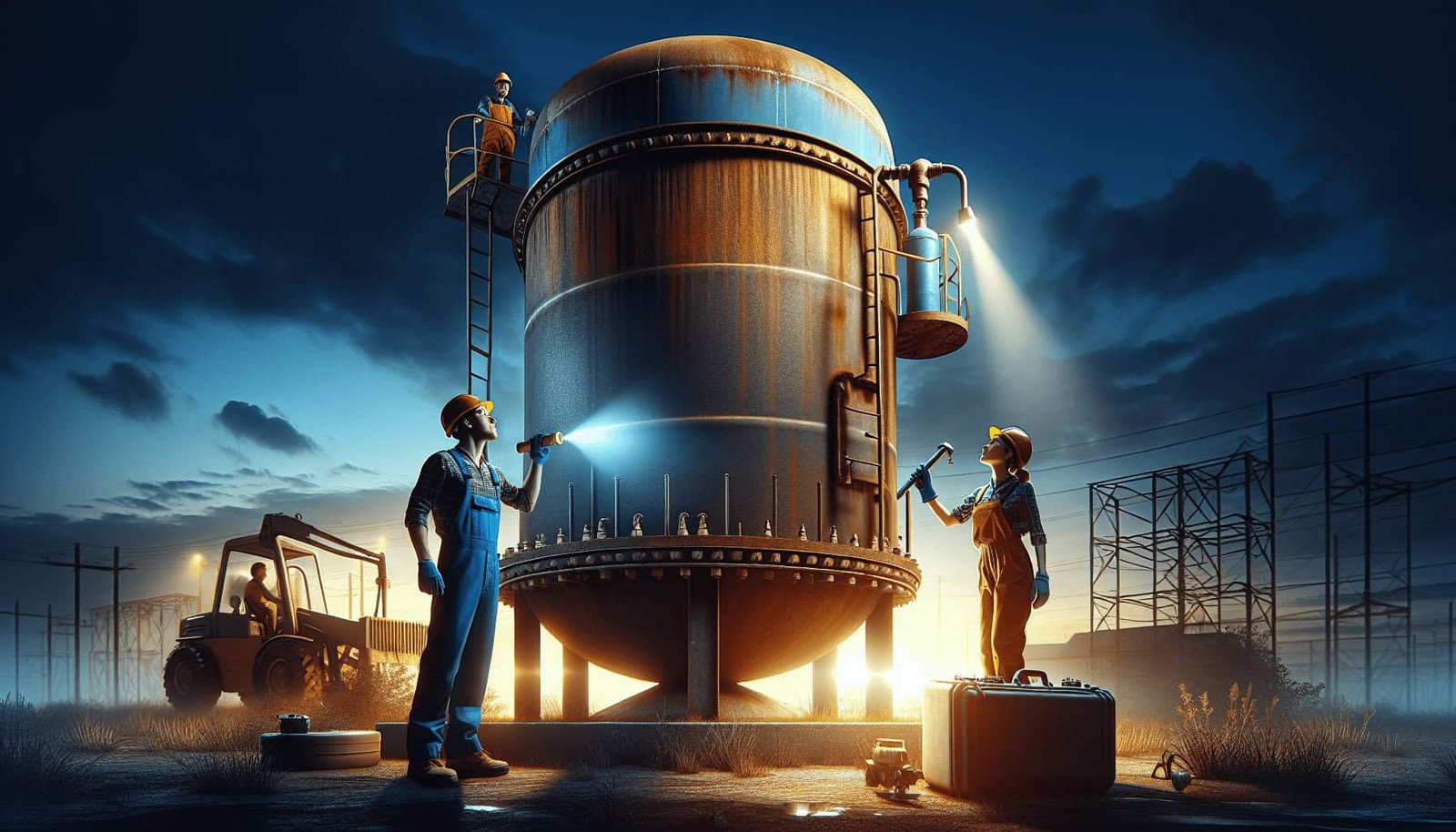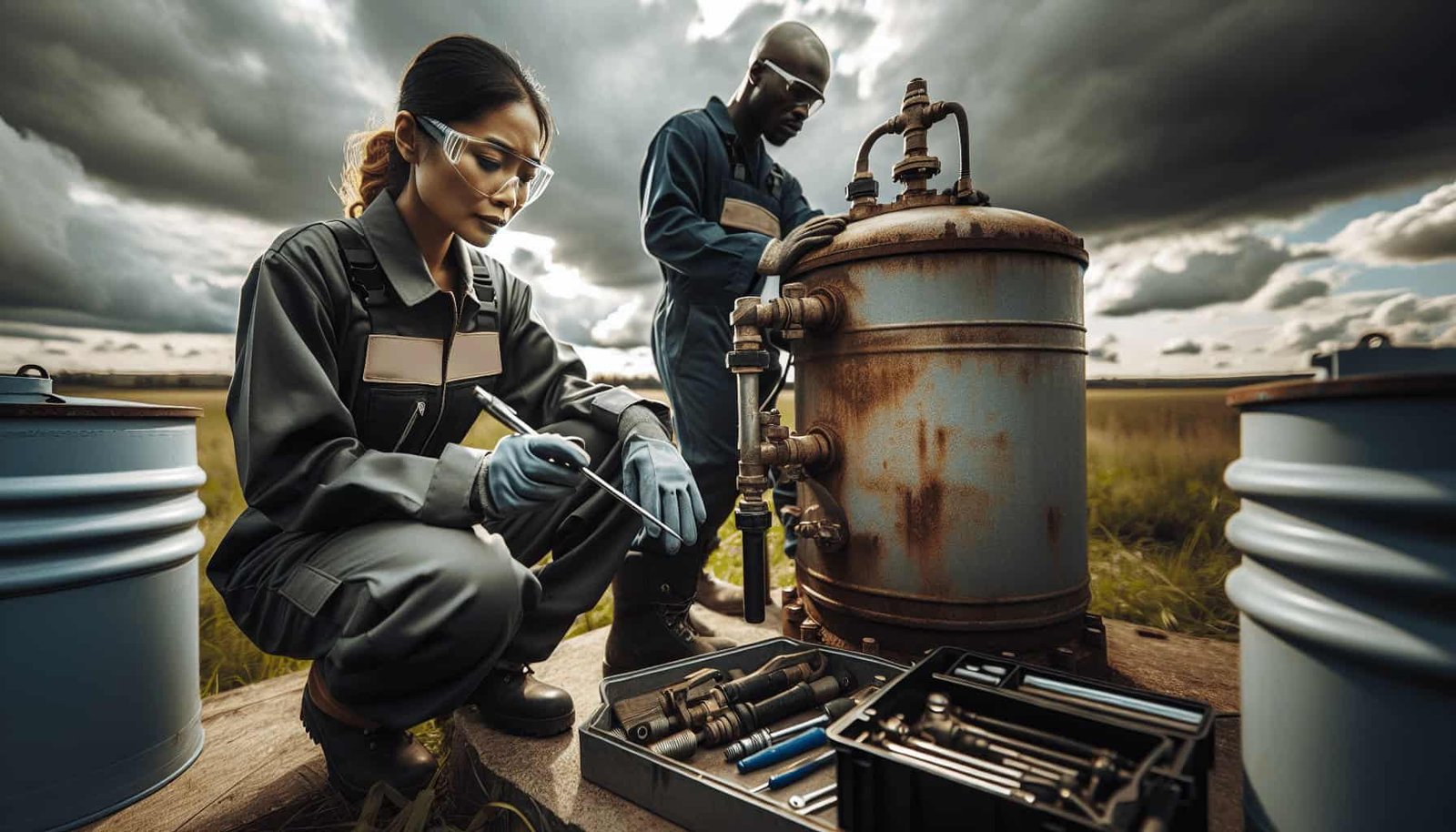Are you concerned about the safety of your well? Wondering how to protect it from any potential issues related to well water pressure tank maintenance standards? In this article, we will explore some important tips and guidelines that can help you ensure the safety and longevity of your well. By following these recommendations, you can have peace of mind and prevent any potential risks associated with well water pressure tank maintenance. So, let’s jump right in and find out how you can protect your well!
Understanding the Importance of Well Water Pressure Tank Maintenance Standards
Well water pressure tanks play a crucial role in maintaining a constant water pressure in your well system. These tanks serve as a buffer, ensuring that water is readily available whenever you need it. However, without proper maintenance, these tanks can pose safety risks and compromise the efficiency of your well system. That’s why it is vital to understand and adhere to well water pressure tank maintenance standards.
Knowing the Purpose of Well Water Pressure Tanks
Well water pressure tanks are designed to store and distribute water throughout your home or property. They help maintain a consistent pressure level by storing water under pressure, which prevents the pump from cycling on and off frequently. This not only extends the lifespan of your pump but also provides a smooth and consistent water flow throughout your plumbing system.
Exploring the Risks Associated with Improper Maintenance
Improper maintenance of well water pressure tanks can lead to various safety risks and issues. One of the common risks is water contamination. A neglected tank may provide a breeding ground for bacteria, leading to waterborne illnesses. Additionally, failing to maintain the correct water levels in the tank can lead to waterlogging, which puts unnecessary strain on the pump and decreases its efficiency. Moreover, neglected tanks may develop leaks, causing water damage to your property and wasting valuable resources.
Understanding the Role of Maintenance Standards in Ensuring Safety
Maintenance standards are put in place to ensure the safety and functionality of well water pressure tanks. These standards outline the specific requirements for inspections, maintenance, and repairs to be performed regularly. By following these standards, you can identify and address any potential issues before they escalate, ensuring the safety of your water supply and the overall efficiency of your well system.

Regular Inspection and Monitoring
Performing routine visual inspections is crucial in maintaining the integrity of your well water pressure tank. Regularly check for signs of leaks, cracks, or corrosion on the tank’s surface. Additionally, paying attention to any unusual noises or vibrations during the operation of the tank can help identify potential issues.
Checking for leaks and water pressure fluctuations is particularly important. Leaks can lead to water loss and damage to the surrounding area, while fluctuations in water pressure can indicate problems with the tank or the well pump. Monitoring the pressure relief valves is also essential to ensure they are functioning correctly, as they are designed to prevent excessive pressure buildup.
Inspecting pressure switches is another crucial step in maintaining the optimal performance of your well water pressure tank. These switches control the operation of the pump and water pressure levels. Regular inspection helps ensure that they are functioning properly and can be adjusted if necessary.
Maintaining Proper Water Levels
Understanding the optimal water level for pressure tanks is vital for their efficient operation. Overfilling or underfilling the tank can lead to various issues. Overfilling, known as waterlogging, puts unnecessary strain on the pump and decreases its lifespan. Underfilling can cause the pump to turn on and off frequently, leading to increased energy consumption and wear and tear on the system.
Inspecting the air charge in the tank is crucial to reduce the risk of waterlogging. The air charge acts as a cushion, balancing the pressure of the water inside the tank. If the air charge is too low or nonexistent, water can fill the entire tank, causing waterlogging. Regularly checking and adjusting the pressure switch settings can help maintain the proper water levels in the tank.
Ensuring a consistent water level is also important for the overall efficiency of your well system. Fluctuating water levels can put unnecessary strain on the pump and affect the performance of your plumbing fixtures. Regularly checking and maintaining the water level in your well water pressure tank can help prevent these issues and ensure a smooth water flow throughout your property.

Ensuring Adequate Ventilation and Protection
Proper ventilation is crucial for well water pressure tanks. Inspecting the tank enclosure regularly ensures that there is adequate airflow around the tank. Lack of ventilation can lead to excess condensation, which can promote the growth of bacteria and fungi.
Covering the tank properly is essential to prevent waterlogging. Moisture from rain or snow can seep into the tank, causing waterlogging and potential damage. Ensure that your well water pressure tank has a suitable covering to protect it from the elements and prevent any water-related issues.
Extreme weather conditions can pose a threat to your well water pressure tank. Tanks should be protected from freezing temperatures in winter and excessive heat in summer. Insulate your tank if necessary and consider installing a tank heater to prevent freezing during cold winter months.
Avoid exposing your well water pressure tank to direct sunlight or corrosive gases. Both can deteriorate the tank and its components, leading to leaks and other structural issues. Make sure the tank is positioned in a shaded and well-ventilated area to minimize exposure to these damaging elements.
Addressing Structural Integrity
Ensuring proper tank installation and foundation is crucial for the structural integrity of your well water pressure tank. The tank should be placed on a level and stable surface. If the tank is not adequately supported, it may shift or tilt, potentially causing damage to the tank and its connections.
Regularly inspecting tank fittings and connections for leaks is also important. Loose fittings or deteriorated connections can lead to water loss and decrease the efficiency of your well system. Additionally, testing the structural integrity of the tank periodically can help identify any damage or weaknesses that require immediate attention.
In case any components of the tank are damaged, it is crucial to repair or replace them promptly. Delaying repairs can lead to further damage and compromise the overall functionality and safety of your well water pressure tank.

Proper Cleaning and Sanitization
Flushing the system periodically is important to remove sediment and mineral buildup that can accumulate in the tank. Sediment and minerals can affect the water quality and decrease the tank’s efficiency. Flushing the tank ensures that clean and clear water is being stored, which reduces the risk of contamination and improves the performance of your well system.
In addition to flushing, sanitizing the tank on a regular basis is crucial to prevent bacterial growth. Bacteria can enter the tank through various sources, including the well itself or from external contamination. Sanitizing the tank helps eliminate any potential pathogens, ensuring that the water stored in the tank remains clean and safe for use. It is especially important to disinfect the tank after any repairs or maintenance to prevent the introduction of new contaminants.
Following Manufacturer Guidelines and Expert Advice
Understanding and following the manufacturer’s recommended maintenance is essential for the optimal operation of your well water pressure tank. The manufacturer’s guidelines provide valuable information on inspections, cleaning, and other maintenance procedures specific to your tank model. It is important to familiarize yourself with these guidelines and adhere to them to ensure the longevity and safety of your tank.
Consulting professionals for guidance and expertise is highly recommended, especially if you are unsure about any maintenance procedures or encounter any issues with your well water pressure tank. Well system professionals have the knowledge and experience to identify and resolve any problems effectively. They can provide valuable advice on maintenance practices specific to your well system, ensuring optimal safety and performance.
Adhering to expert advice is crucial for the long-term safety and efficiency of your well water pressure tank. Experts can guide you through proper maintenance techniques and help you address any potential safety issues proactively. The knowledge and insights they provide can save you both time and money, while also ensuring the safety of your well system.

Emergency Preparedness and Response
Developing an emergency plan for pressure tank failures is an important aspect of well water pressure tank maintenance. Even with regular inspections and maintenance, unforeseen failures can occur. Having a well-thought-out plan in place can help you respond swiftly and effectively in case of an emergency.
Knowing how to shut off the well system is crucial in emergency situations. Familiarize yourself with the location of the main shut-off valve and understand how to operate it properly. This will allow you to quickly stop the flow of water and minimize any potential damage.
Keeping emergency contact information readily available is essential. Make sure you have the phone numbers of professionals who can assist you in case of emergencies, such as well system contractors or plumbers. They can provide immediate assistance and guidance when needed.
Regularly testing and maintaining backup power sources is another aspect of emergency preparedness. Power outages can render your well system inoperable, compromising your access to water. Installing a backup power source, such as a generator, ensures that your well system can still function during power outages and emergencies.
Importance of Regular Well Water Testing
Regular well water testing is crucial for ensuring the safety and quality of your water supply. The condition of your pressure tank is closely tied to the water quality, and neglecting water testing can lead to potential health risks. It is important to understand the connection between water quality and pressure tank maintenance.
Regularly testing for contaminants and pollutants is essential to identify any potential issues early on. Well water can be susceptible to various contaminants, such as bacteria, nitrates, or heavy metals. Conducting water tests allows you to detect these contaminants and take appropriate measures to address them.
Getting the water tested by a certified laboratory is highly recommended. Certified laboratories have the expertise and equipment to accurately analyze water samples and provide reliable results. They can identify any potential risks and suggest appropriate actions to improve the water quality.
Addressing any issues identified by the water test results is important. If contaminants are found, it is crucial to take appropriate remedial actions, such as installing water treatment systems or disinfection methods. Regular testing combined with timely actions helps ensure a safe and reliable water supply for your household.

Upgrading and Modernizing the System
Considering the benefits of upgrading old well water systems is essential to ensure the long-term efficiency and safety of your well water pressure tank. Old systems may lack the modern features and technologies that can improve the overall performance of your well system.
Exploring options for modernizing pressure tanks can lead to improved efficiency and reduced maintenance needs. Technology advancements in pressure tank design and materials can enhance the durability and functionality of the tank. Upgrading to a newer tank can also improve water pressure regulation and result in a more consistent water flow throughout your property.
Investing in energy-efficient and smart technology can bring additional advantages to your well water pressure system. Energy-efficient pumps and controls can help reduce energy consumption and lower your utility bills. Smart technology, such as remote monitoring systems, allows you to keep track of your well system’s performance and receive real-time alerts in case of any issues.
Consulting professionals for system upgrades is highly recommended. They can assess the current state of your well system and recommend suitable upgrades based on your specific needs. Professionals have the expertise to identify the most cost-effective and reliable options for upgrading your well water pressure tank system.
In conclusion, understanding the importance of well water pressure tank maintenance standards is crucial for the safety and efficiency of your well system. Regular inspection and monitoring, maintaining proper water levels, ensuring adequate ventilation and protection, addressing structural integrity, proper cleaning and sanitization, following manufacturer guidelines and expert advice, emergency preparedness and response, regular well water testing, and system upgrades all contribute to the well-being of your well water pressure tank and the quality of your water supply. By following these maintenance standards and taking appropriate actions, you can protect your well from safety issues and ensure a reliable and clean water source for your household.
